After climbing out of Menaggio on tight switchbacks up to Croce, high on the ridge, the road scoots along the floor of the Val Menaggio, passing Bene Lario and 3km later reaching the small, reedy Lago di Piano, protected as a nature reserve and breeding place for water birds. Drop into the little information office beside the lake, or ask the Menaggio tourist office for the route description of a pleasant, almost flat two-hour walk here that takes in woodlands and a fortified cluster of medieval houses on a peninsula in the lake, known as Castel San Pietro.
We read this suggestion in The Rough Guide to the Italian Lakes and it sounded like a good plan. I even discovered four views of the lake in one of JMW Turner’s sketchbooks, made as he travelled from Lake Como to Lake Lugano two hundred years ago. But we arrived after days of unusally heavy rain and the lake was overflowing, the surrounding paths were flooded and buzzing with midges.
Joseph Mallord William Turner, Four Sketches of Lake Piano, 1819
It was not an appealing place for a walk; the fearsome midges were not very welcoming and we hadn’t brought our wellies! I’m sure Turner was made of sterner stuff, but we decided to find an alternative.
A look at the map revealed an intriguing tree symbol and the words Rogolone (Pianta Secolare). Was Rogolone a place or a tree? It appeared to be on a path from Codogna so we set off to find out.
The sign in the village seemed to suggest we were on the trail of an old oak tree.
The fresh footprints in the soft earth seemed to suggest we were on the trail of a bear!
Maybe we should tie a rogolone round the old oak tree.
We were going deeper and deeper into the woods. It felt more and more like we were stepping into the pages of Julia Blackburn’s Thin Paths.
Except that our path was so much better signposted.
Someone was very keen that we shouldn’t stray from the path. Maybe because of the bears?
Then just about here we met Bracco, not Bruno. A great big lugubrious and solemn faced dog who suddenly appeared before us. We stopped in our tracks and considered each other. He looked ancient, maybe prehistoric, and he knew we were foreigners. Time hung in the balance. Then his master arrived and action resumed, too quick for a photo but here’s one from the internet – Bracco Italiano.
It must have been his huge paws that made the bear footprints.
Encouraging cries and stubborn complaints were heard from an adjoining path.
Just 100 metres to go to the rogolone old oak tree.
And then there it was, looking surprisingly modest, even youthful considering it’s centuries old.
The notice board says it’s maestosa (majestic) – 25m high and 8m around the trunk.
Giuseppe Penone, Albero Porta, 2012
There’s a little abandoned house alongside the great oak, a lookout, an observatree. I’m reminded of Giuseppe Penone’s log with its inner sapling. Over in the corner lies a discarded sign that seems to suggest the old tree has stories to tell and I remember Italo Calvino’s book of Italian Folktales.
Once upon a time, many years ago, a young maid was leading her father’s donkeys through the woods, along the way to the higher pastures where they would be left to graze. This was to be their reward for all their hard labour at the mill down in the valley… As they came through the clearing where stood the sentinel oak, one of the donkeys disappeared behind the tree. The girl called out but the stubborn creature did not come. She tied the other two donkeys to a small maple then proceeded around the oak tree to the far side, where she discovered it was hollow. The opening was large, there were hoof prints in the soft earth and… was that a distant braying sound she heard from inside? She felt compelled to enter the ancient tree. It was slippery with moss and heavy with the pungent scent of leafmould and foxes. She descended into the darkness guided by the hee-haws, which in truth were echoing down the rabbit holes from above. But before she knew it the mouth of the tree had closed and she was swallowed up… The missing donkey reappeared out of the undergrowth and dutifully retraced its steps back down to the mill… The girl’s father was surprised to see the donkey come back alone. Fearing the worst he ran up the path that leads to the higher pastures. Breathless, he discovered the other donkeys tethered in the clearing, and behind the old oak tree, on the soft trampled earth he found the silver bracelet he’d given his daughter on her last birthday. He looked up into the branches, hoping this was a trick, and she would jump down into his arms. But the tree was empty and he feared she was kidnapped by brigands. His heart was racing as he bent to pick up the bracelet and he gathered with it a large and exceptionally beautiful acorn. As he did so, his daughter’s voice came to him saying, “Eat me and set me free!” Without a second thought he swallowed the fruit and in an instant, with a gentle sigh, the door of the tree reopened and out stepped his daughter. “Oh! my daddy, my daddy” she cried and he was overjoyed. His poor heart burst in his chest and he fell down dead… He was buried where he fell, and as he lay in the earth the acorn grew inside him, and his spirit migrated into the new born tree… The first oak was known as ‘Il Rogolone’ and over the years, as the second oak grew bigger it became known as ‘Il Rogolino’.
Back outside again and the dreaming continues, the clearing is alive with small butterflies springing out of the ground, dancing around and drinking from the pretty pink wildflowers hidden in the grass.
We turn and retrace our steps down the hill, just as two donkey herders climb up to meet us.
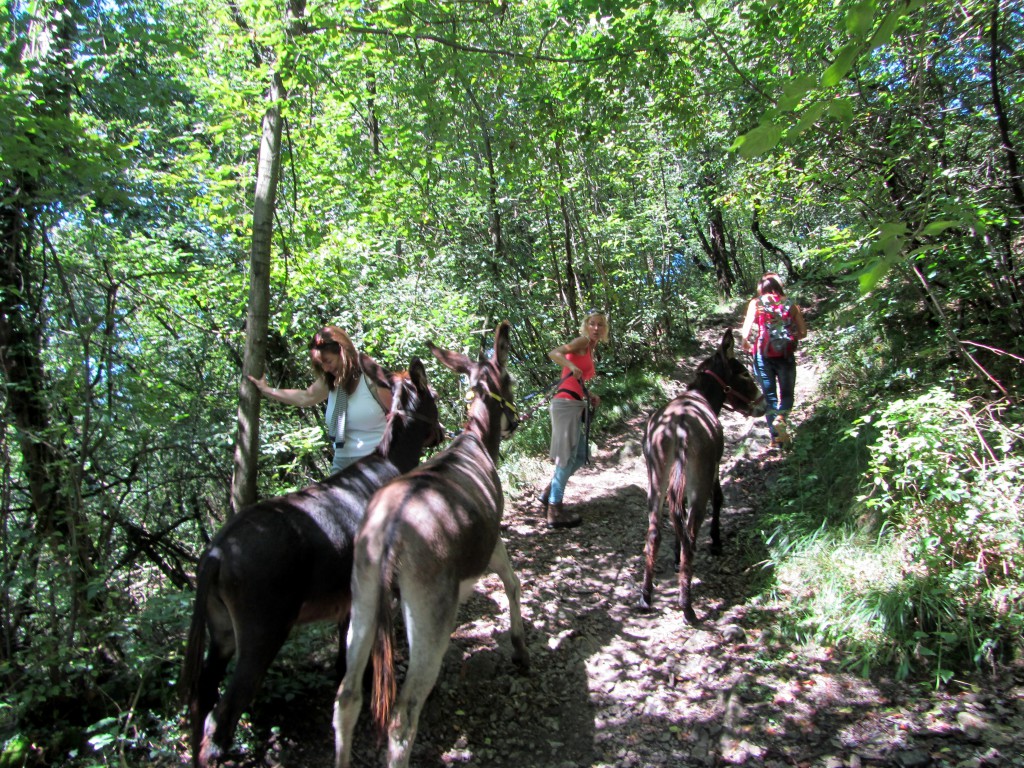
The girls speak only Italian, except to their dog, a Border Collie.
come-bye lie down walk on
tangled wood hidden bower dappled beauty
walking stones running water dancing feet
a flooded path a dividing wall an overflowing stream
orange twine dragonflies pool of light
buddleia tiger moth fritillary
deer tracks? boar tracks? goat tracks?
maiden pink cyclamen hibiscus
hornbeam hazel walnut
a field of wildflowers an empty farmhouse an overgrown garden
singing trees blue mountains rustling undergrowth
an oak leaf a grasshopper a speckled feather
ripe tomatoes a basking lizard wild cherries
Back in Codogna it seemed a good idea to investigate the museum. The gate was open so I climbed the steps but the door was closed. I heard voices inside through the open windows, and the sound of more doors closing and as I turned the corner a car drove away. I’d arrived at closing time. If I’d got there just a bit sooner I would surely have bought a copy of their book – Il Rogolone: storia di un albero.
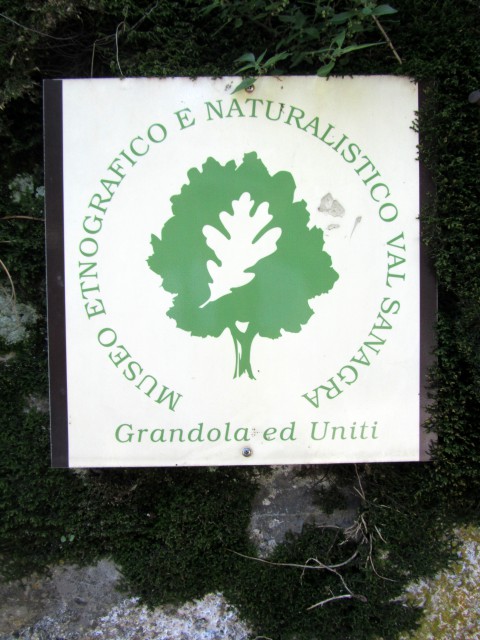
And then in the garden I discovered a wonderful twisted magnolia, or was it two, entwined in an ancient embrace like a double helix tree of life.
Perhaps it’s Magnolia umbilicalis, a venerable Bodhi tree at the navel of the earth.



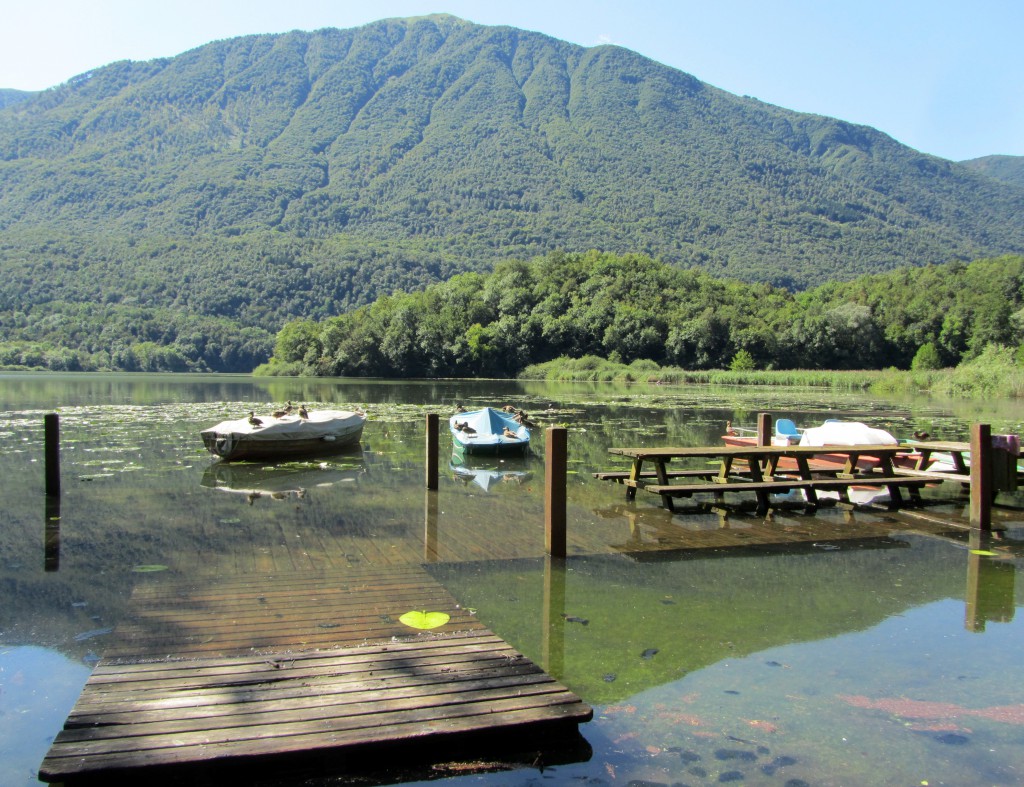
![Sketches on Lac Piano [Turner] (Lago di Piano) 1819 by Joseph Mallord William Turner 1775-1851](http://cdn.rowleygallery.co.uk/2015/02/0031.jpg)



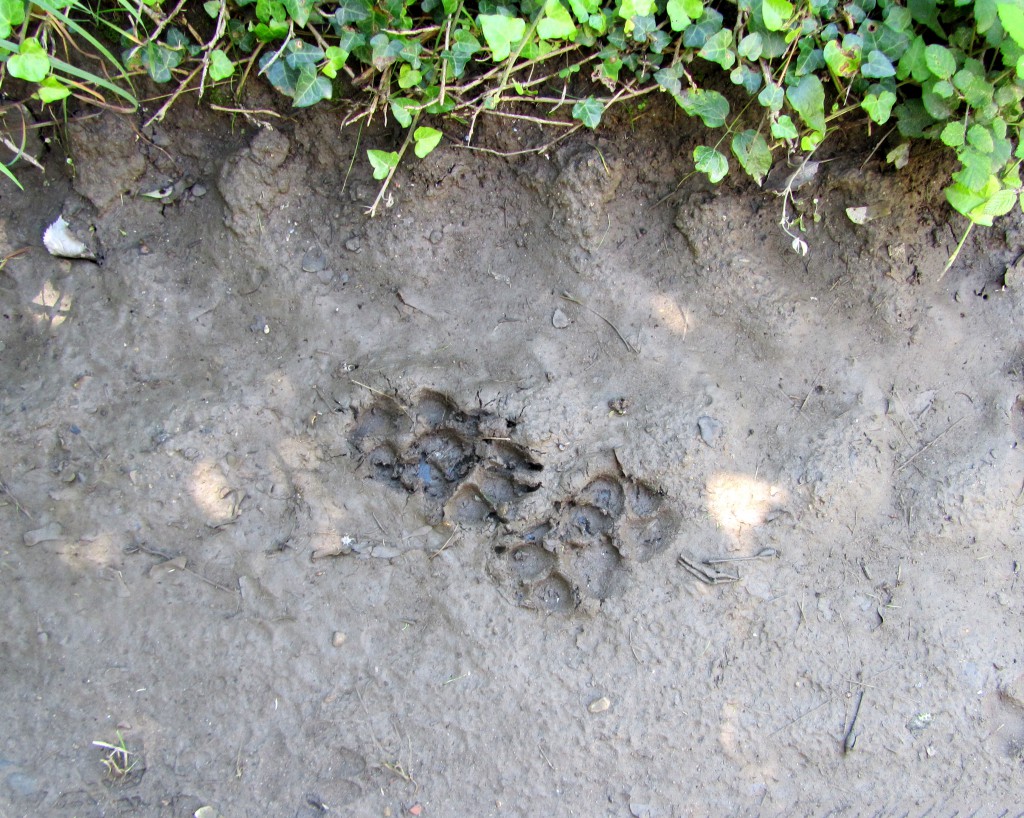
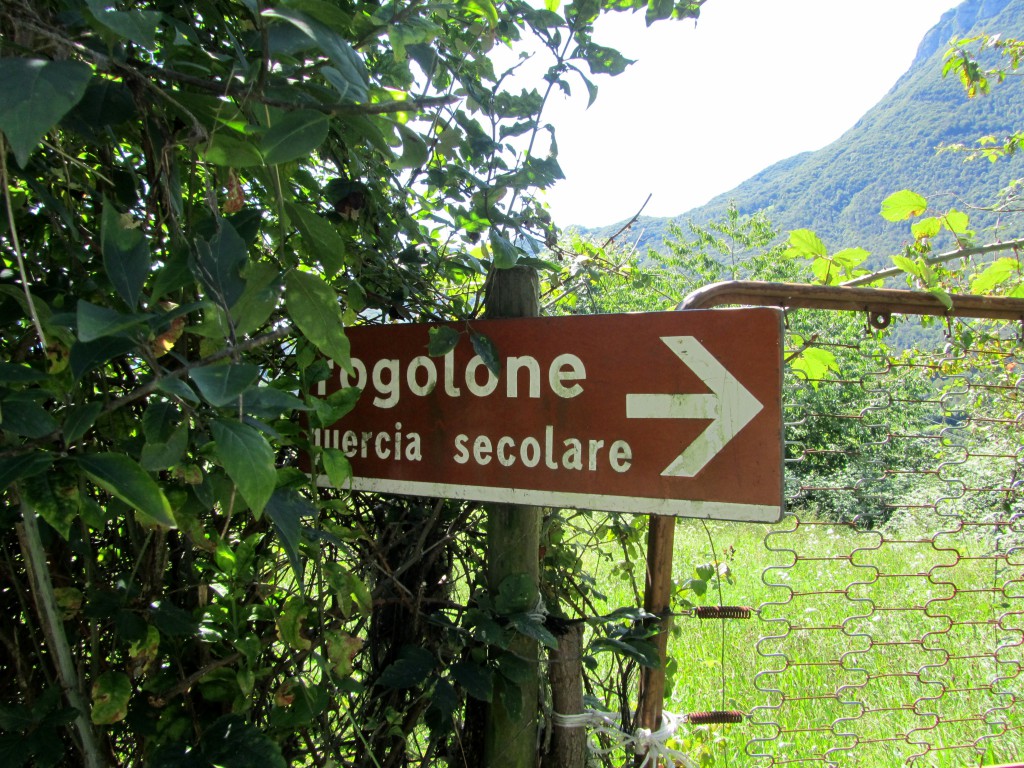
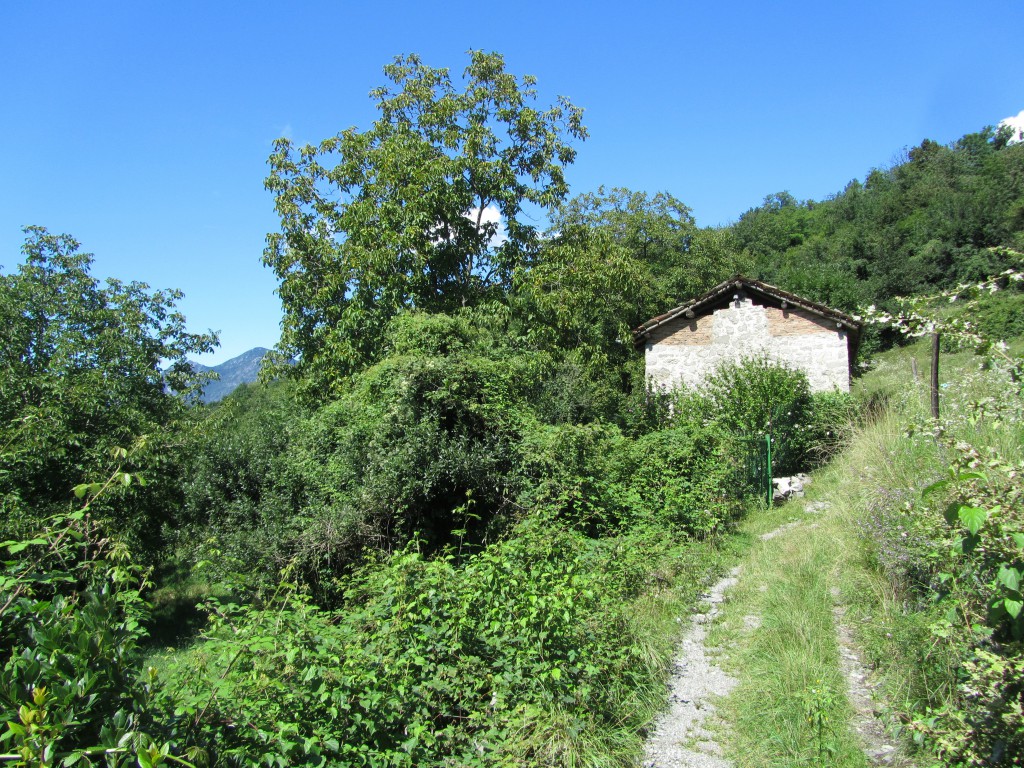

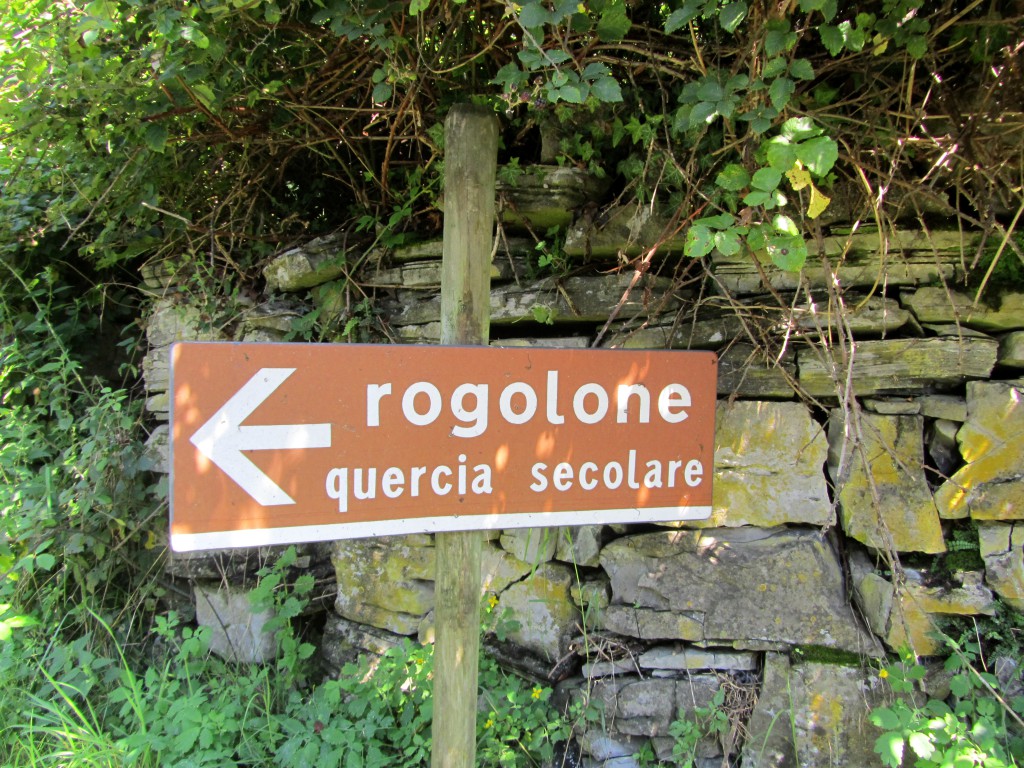
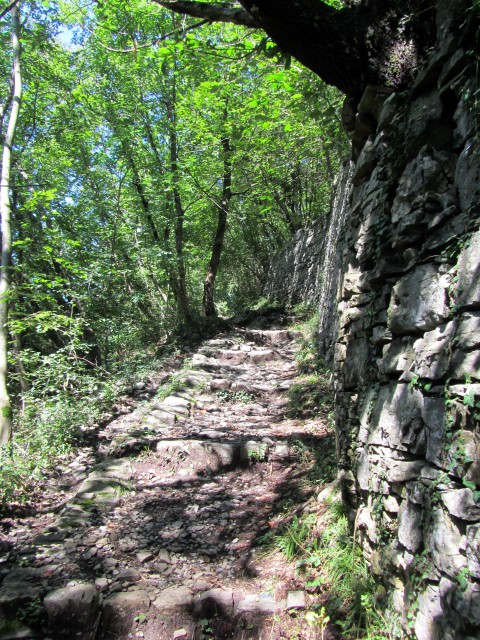
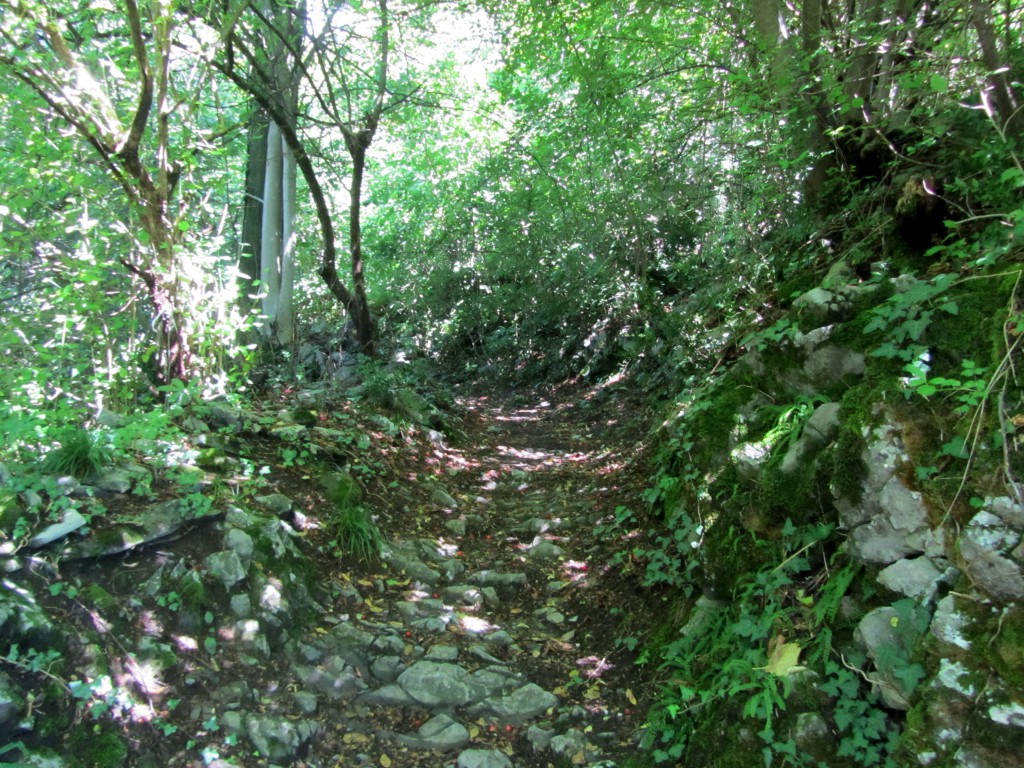




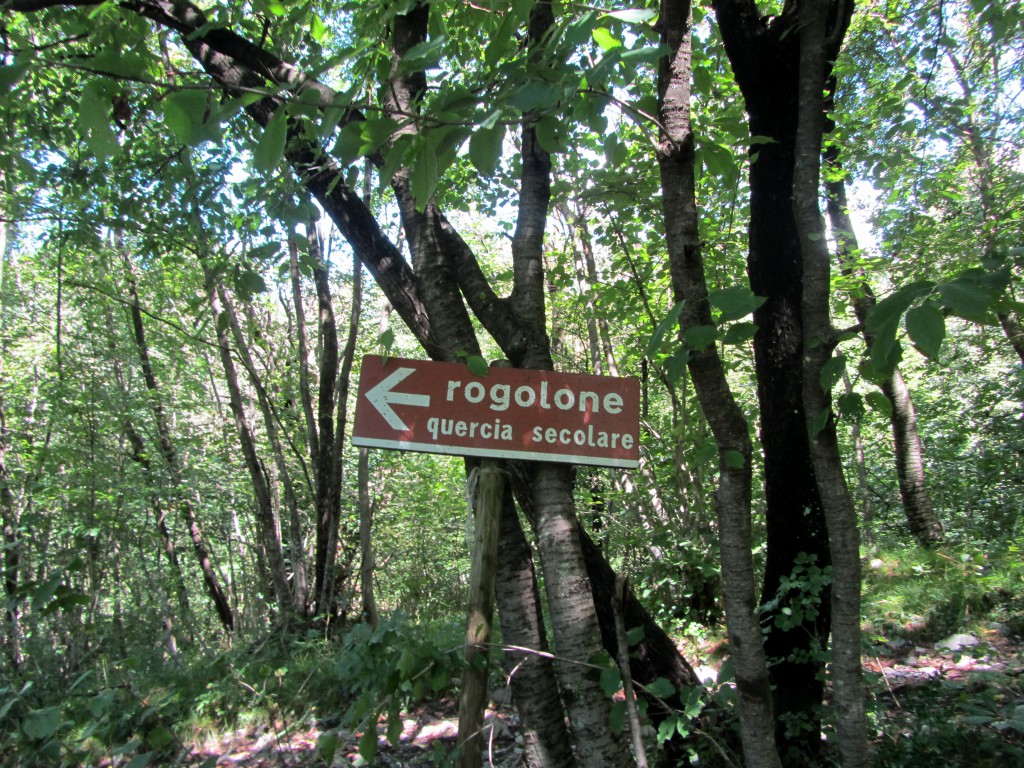
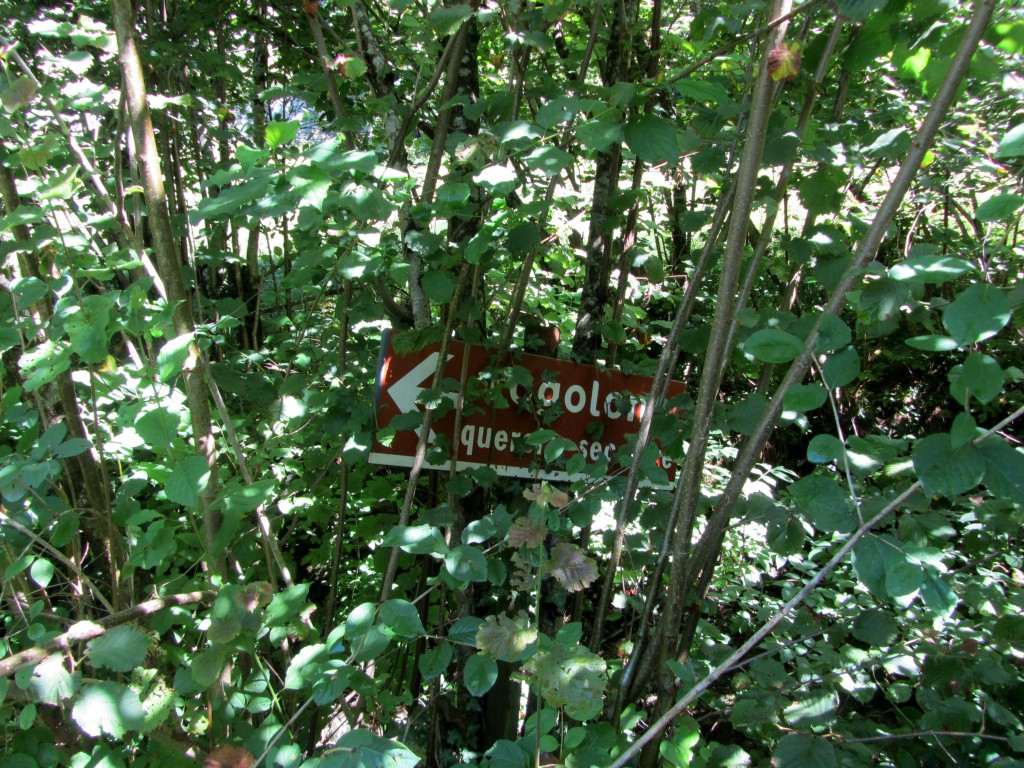

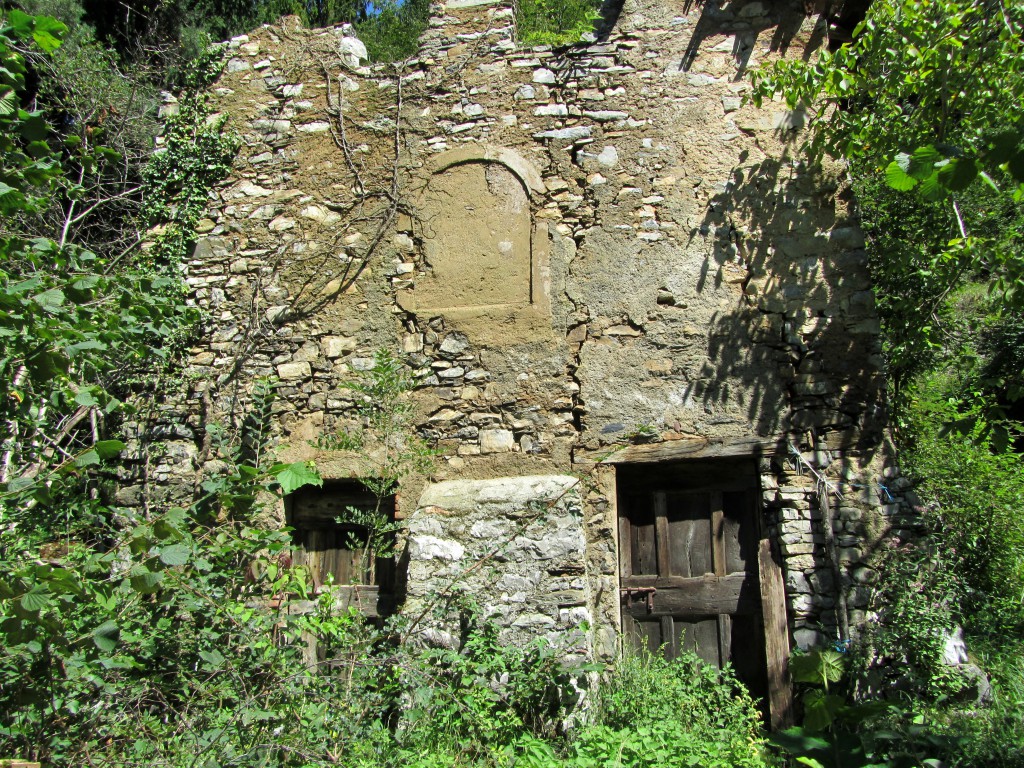
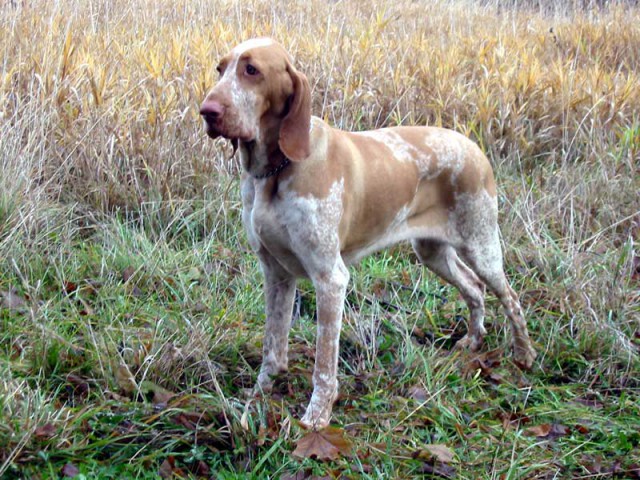

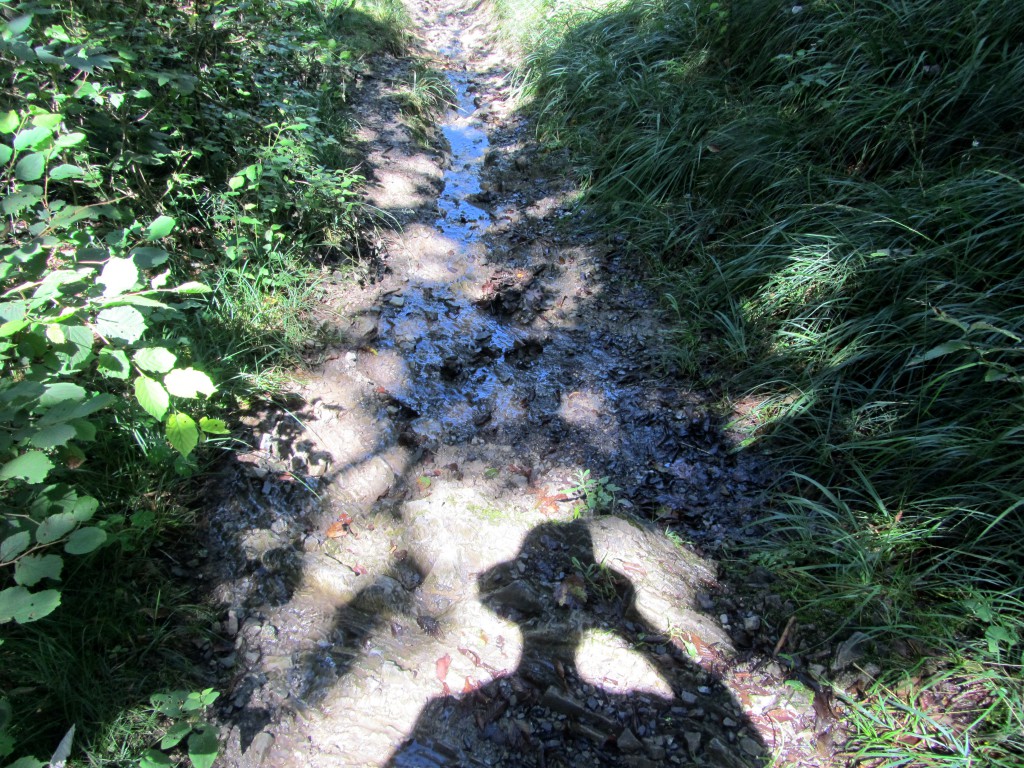

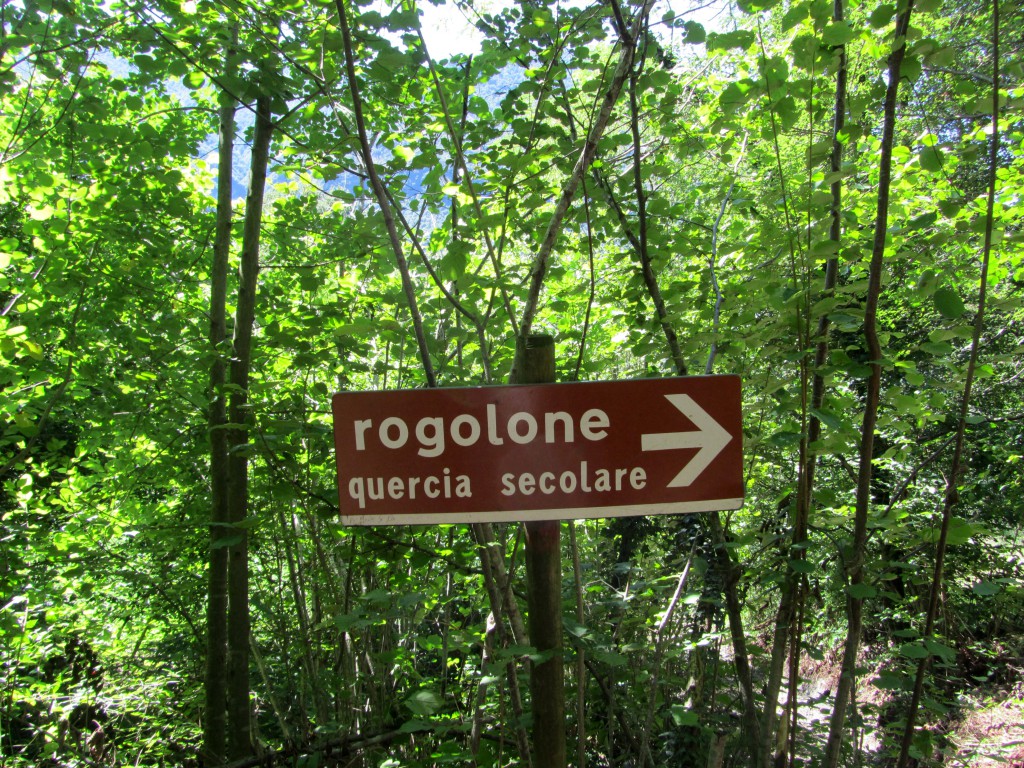
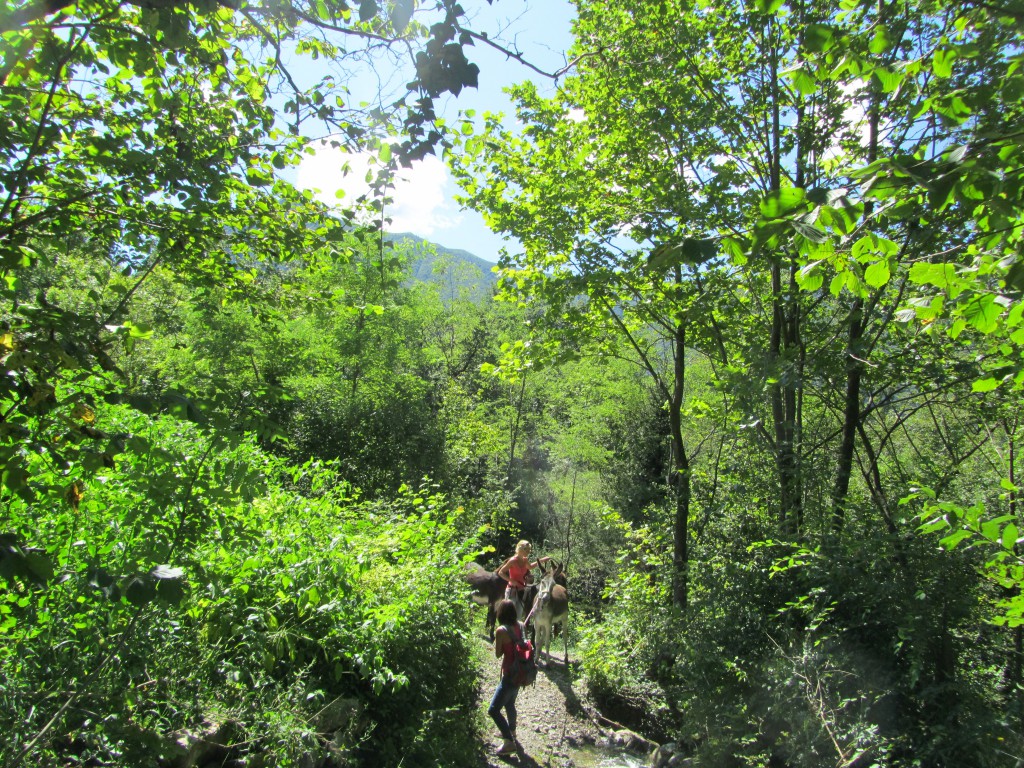
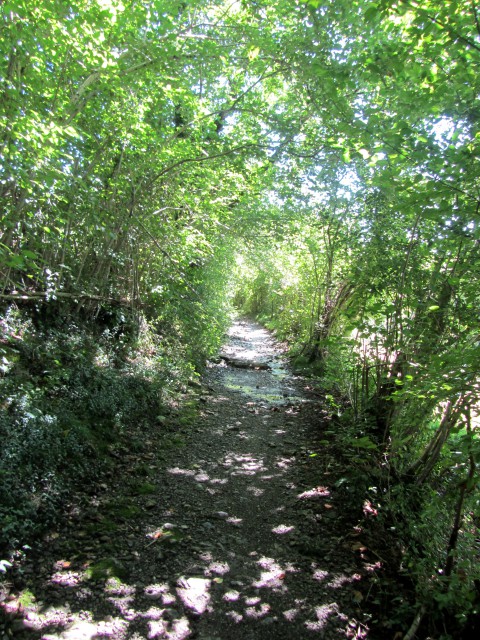
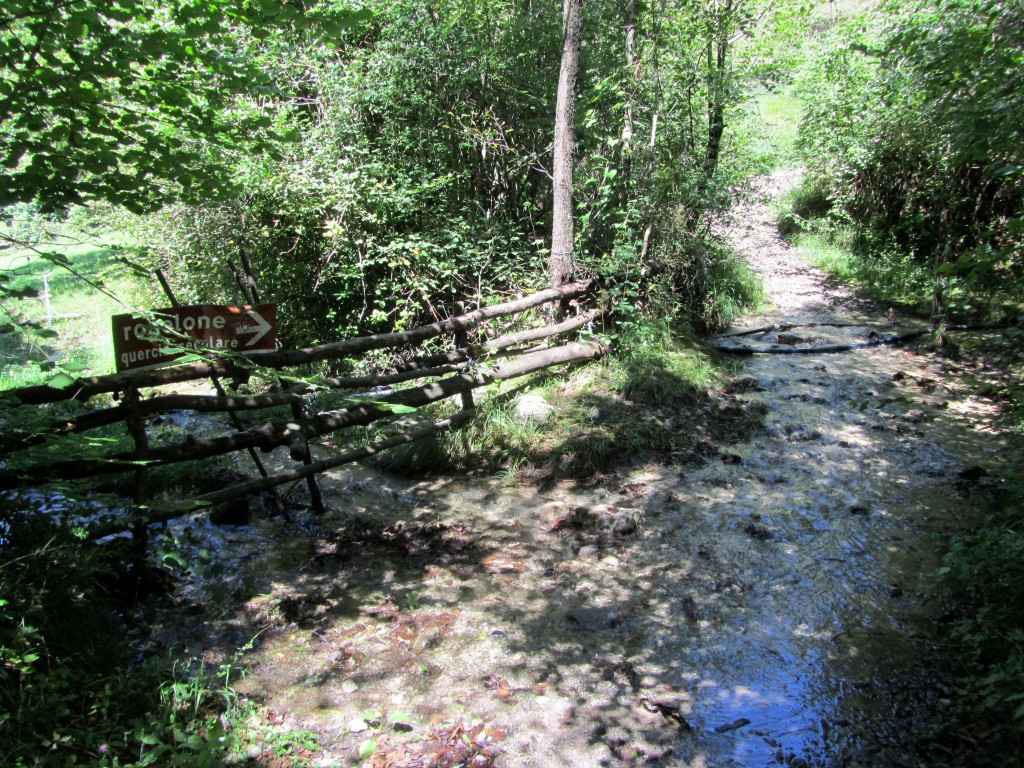
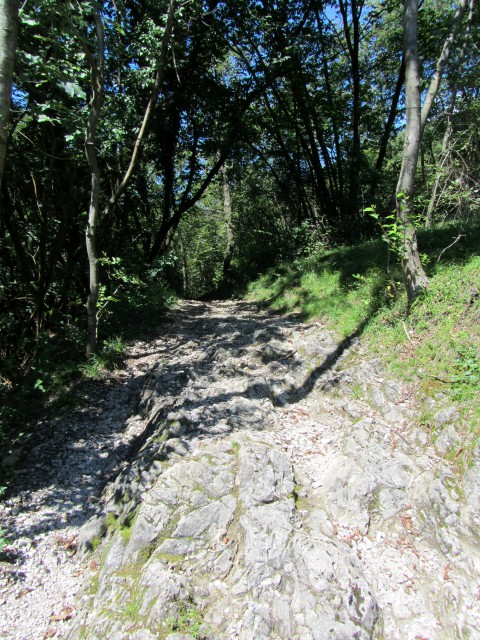
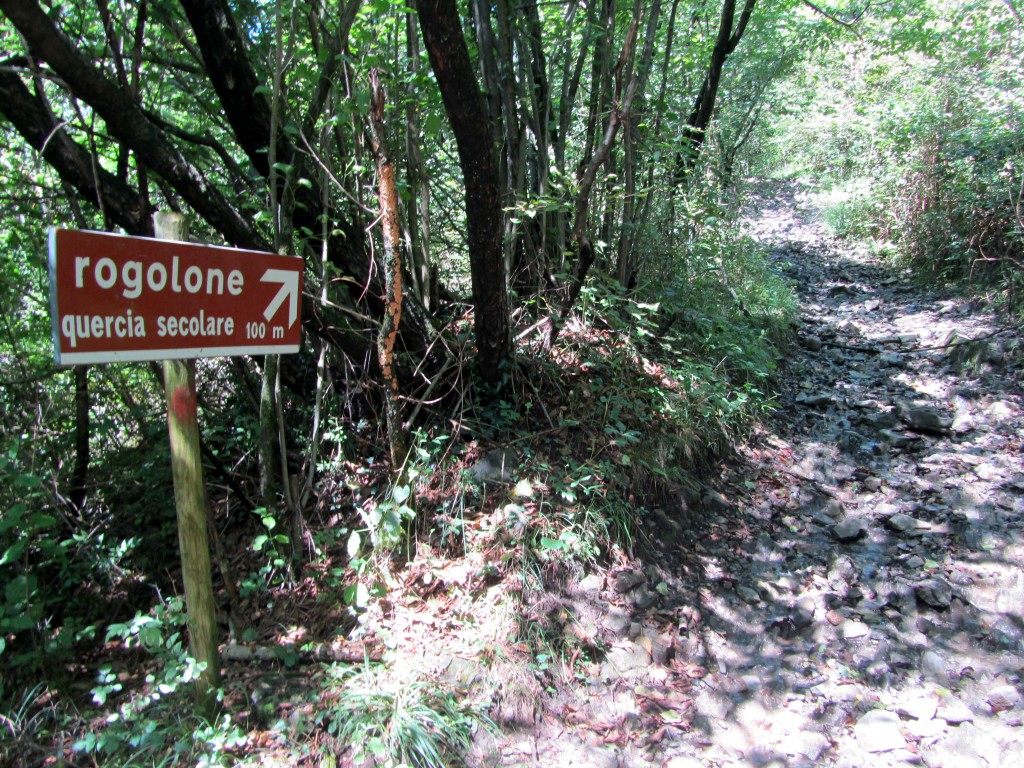
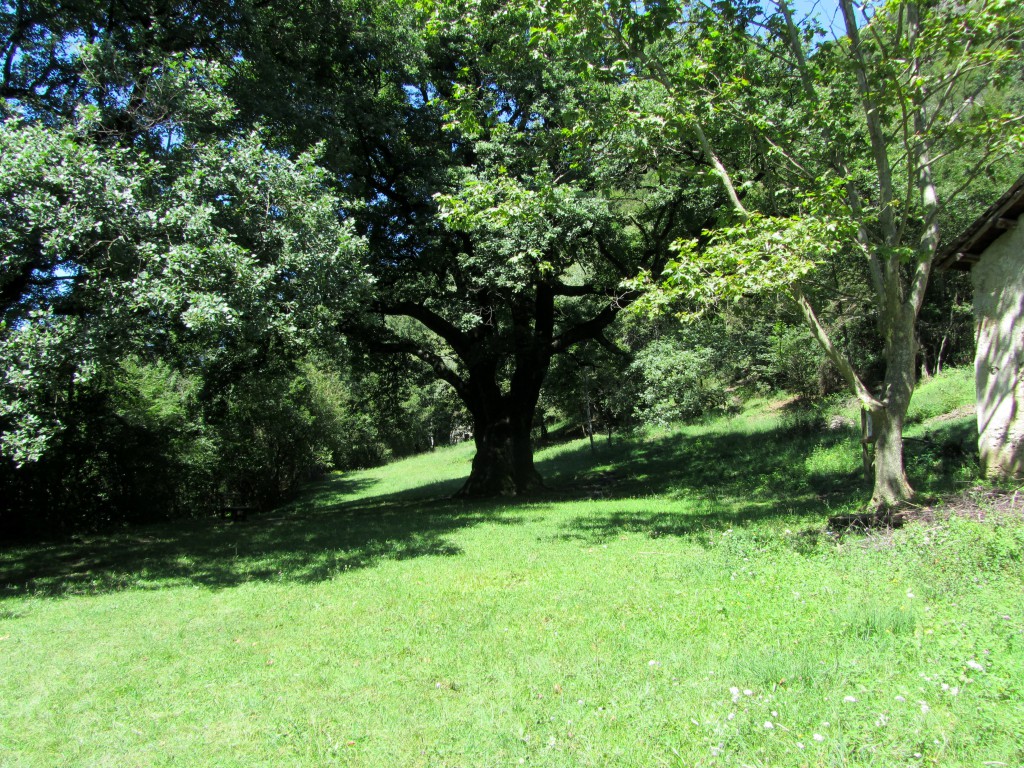
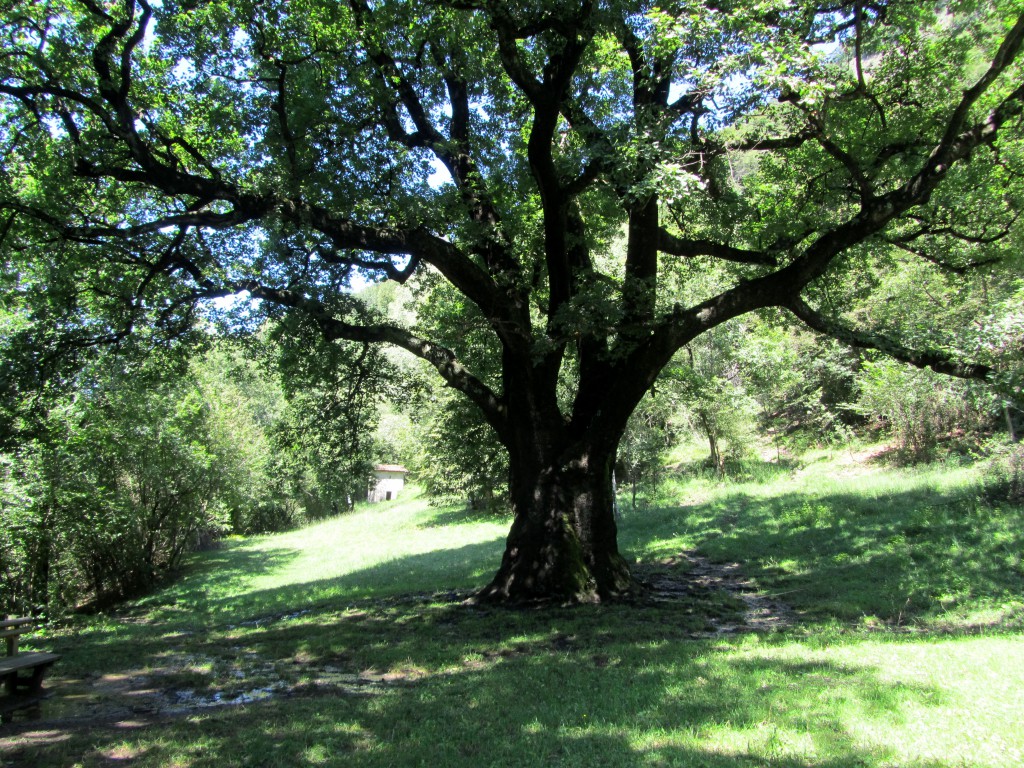
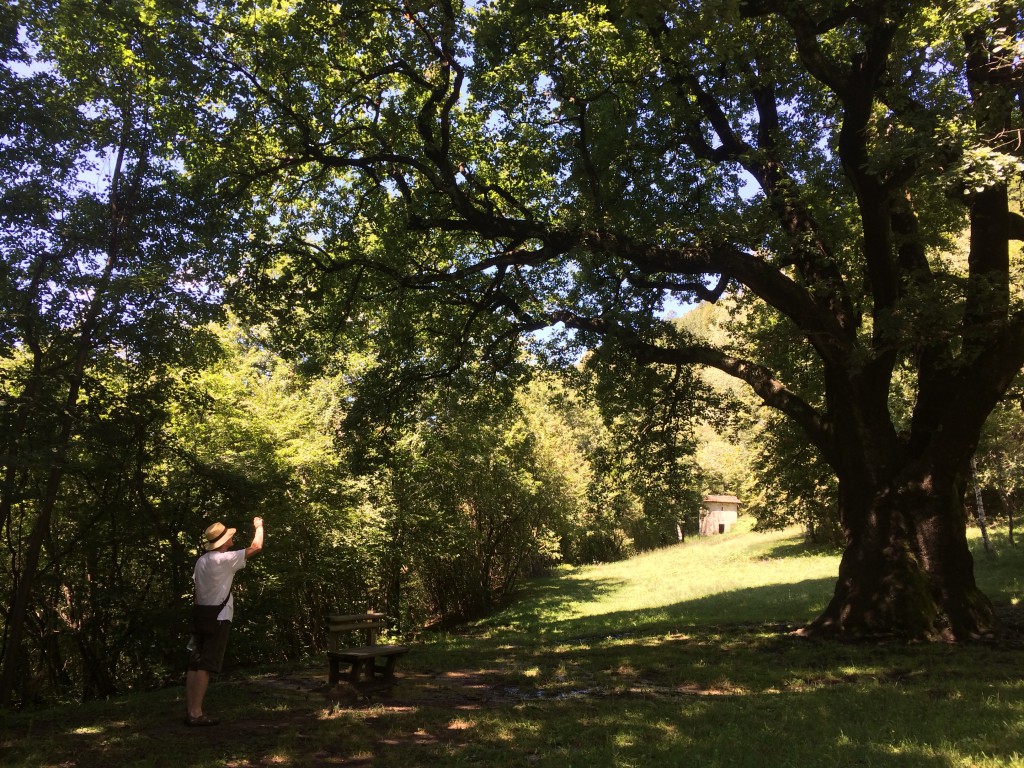
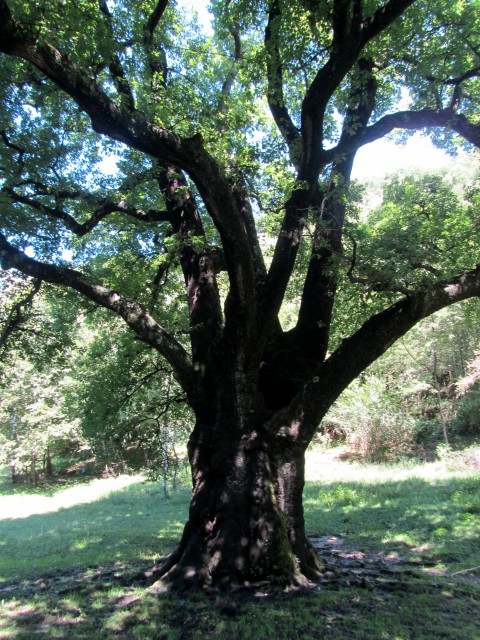
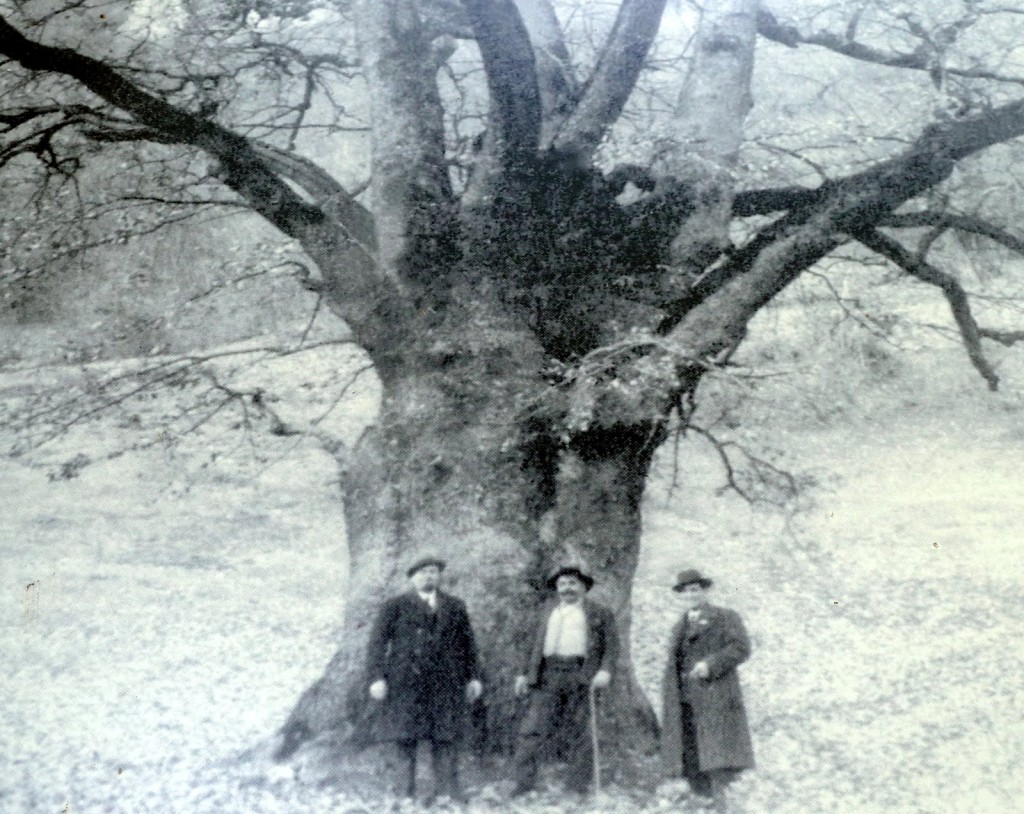
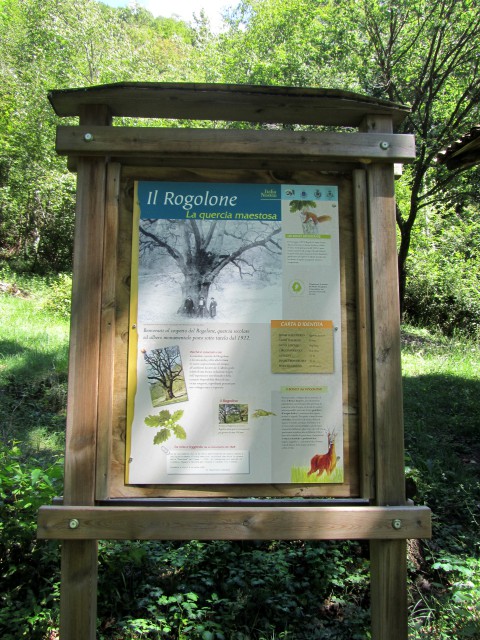
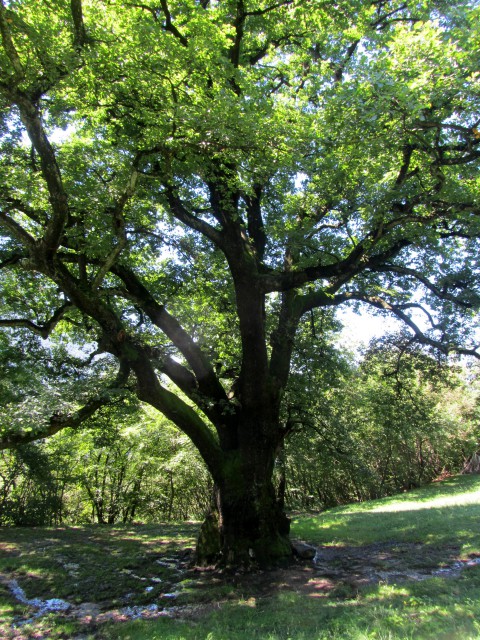
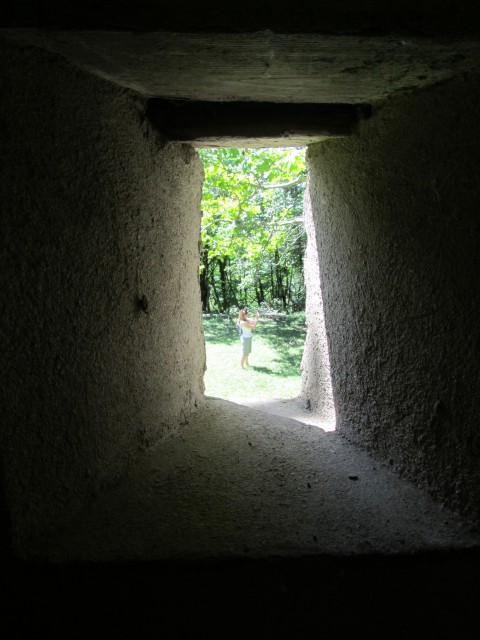
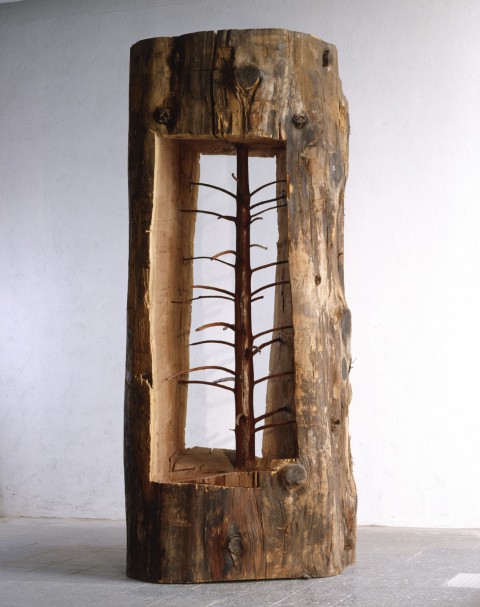
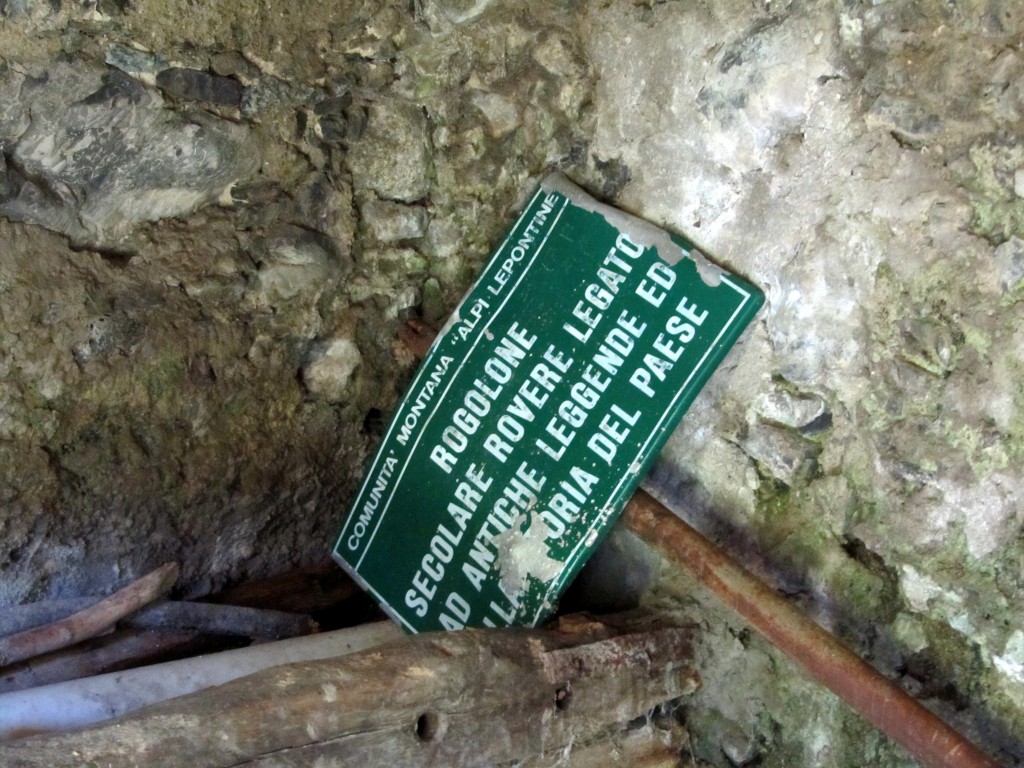
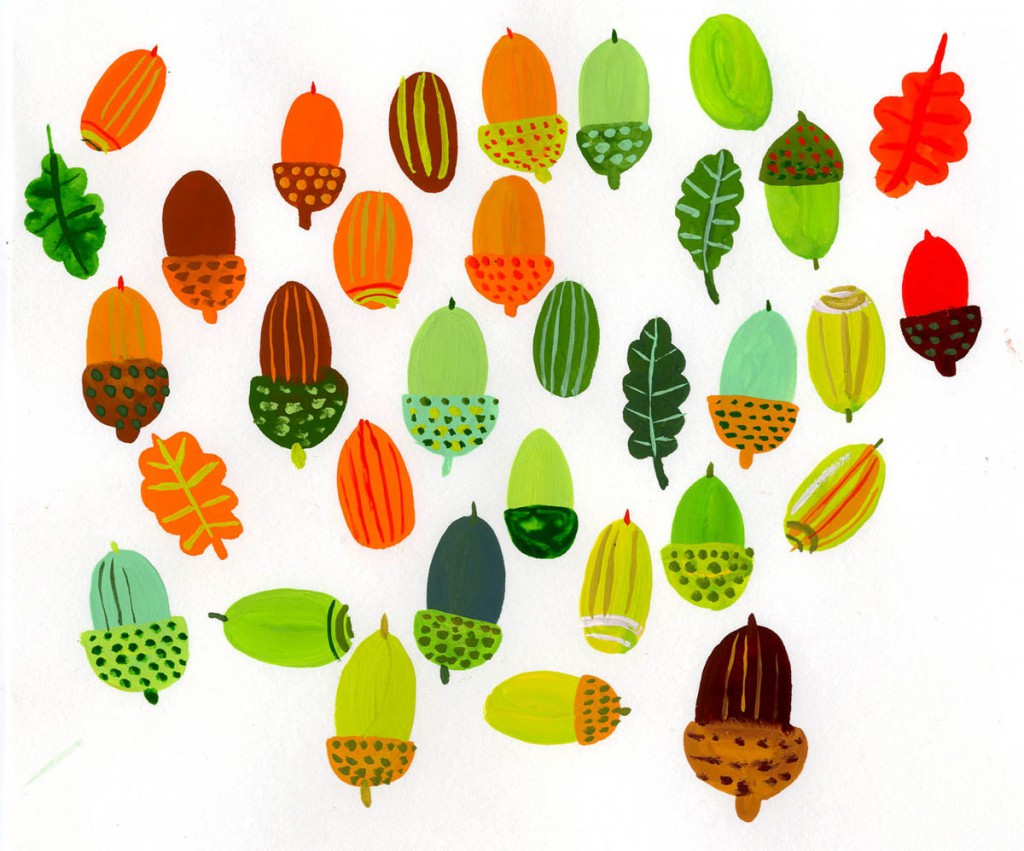


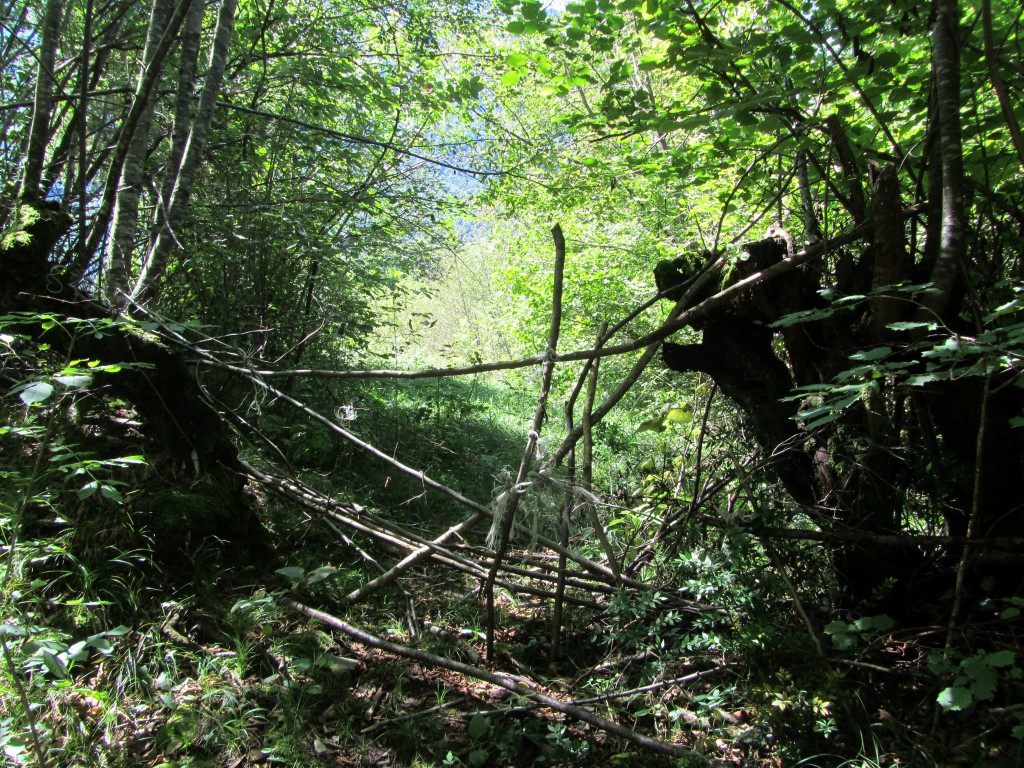
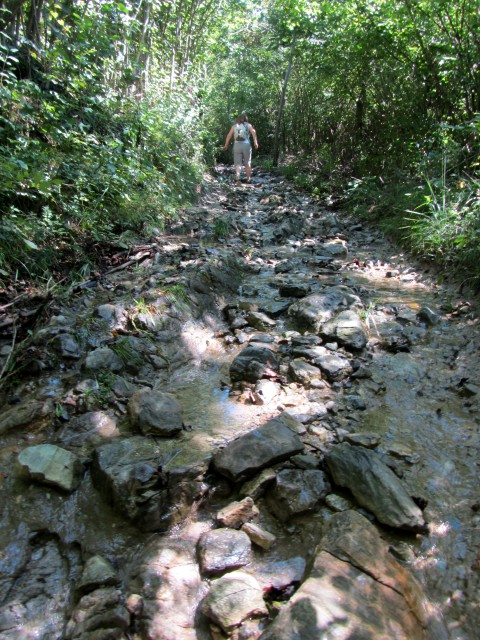

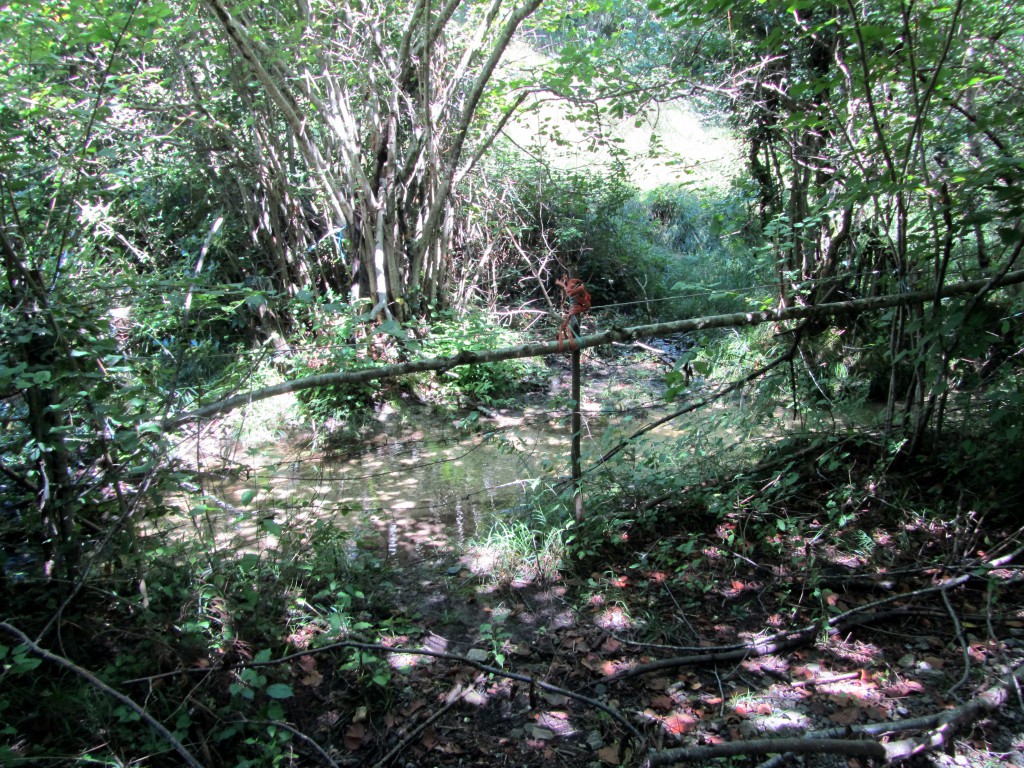
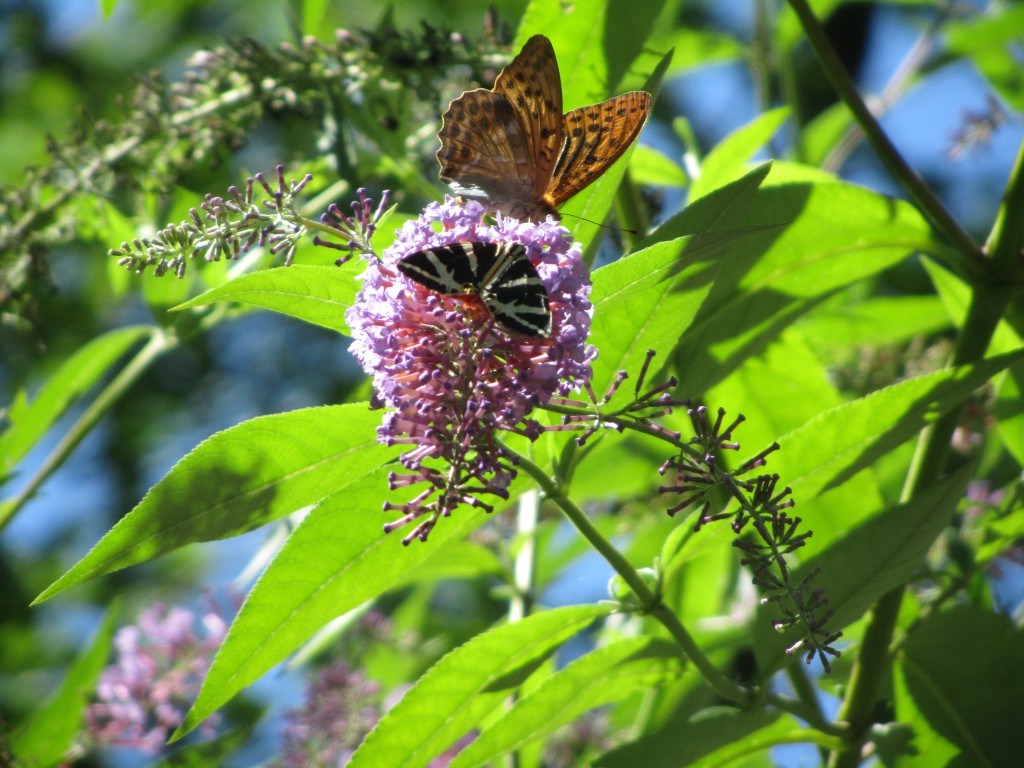
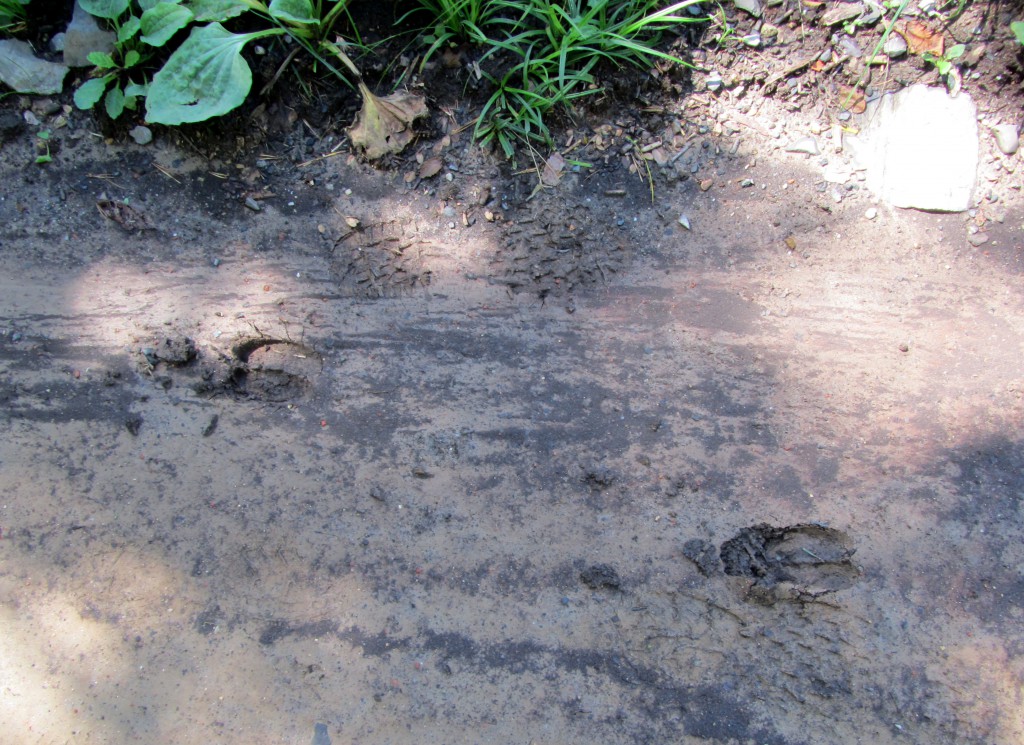
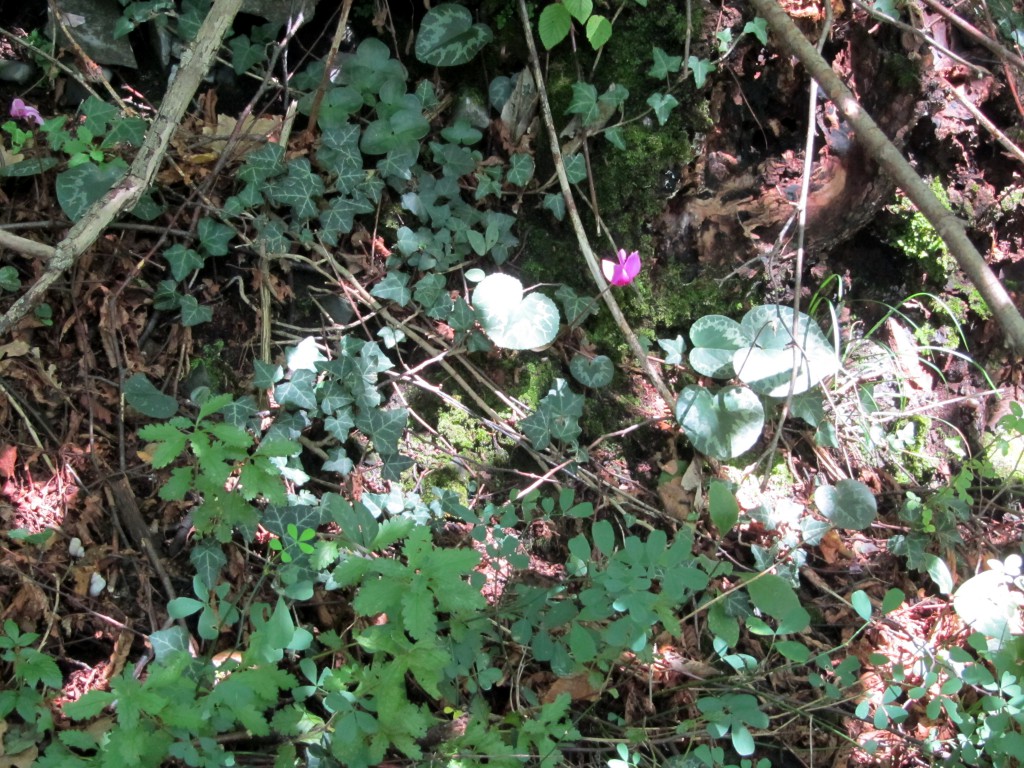
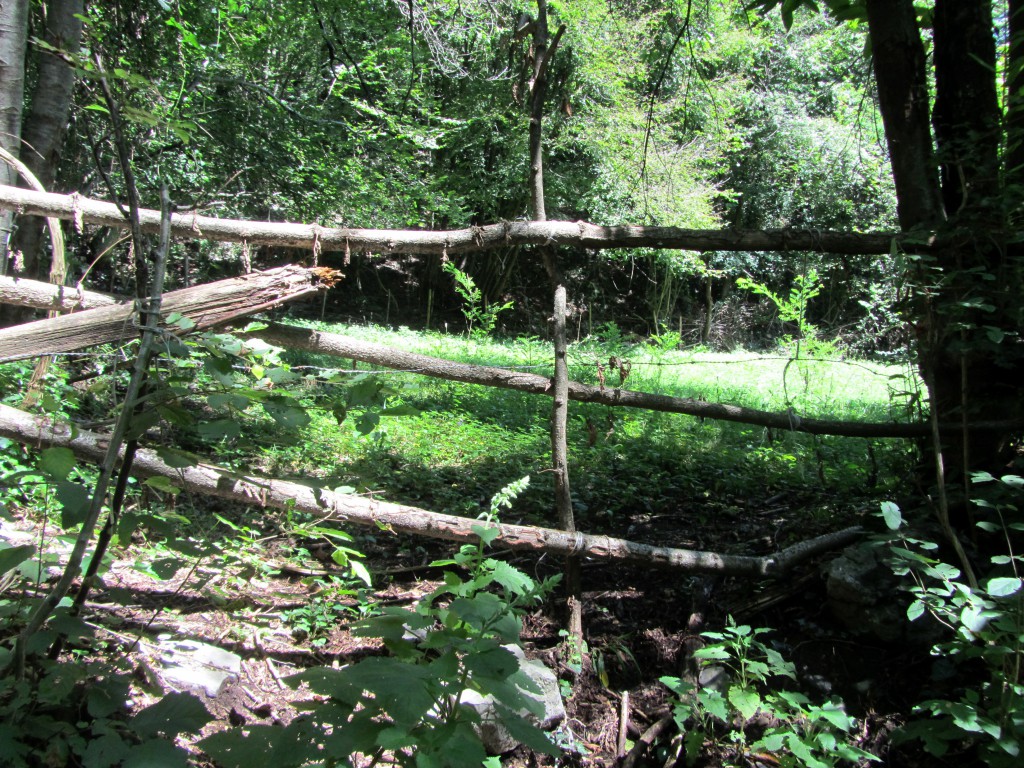
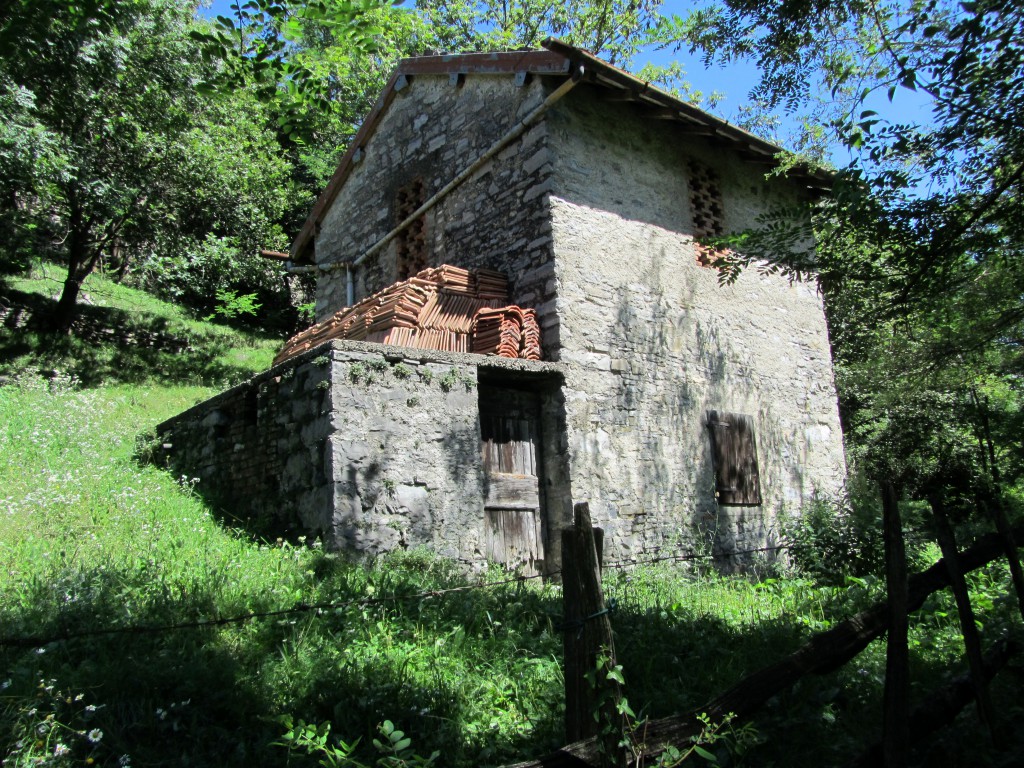
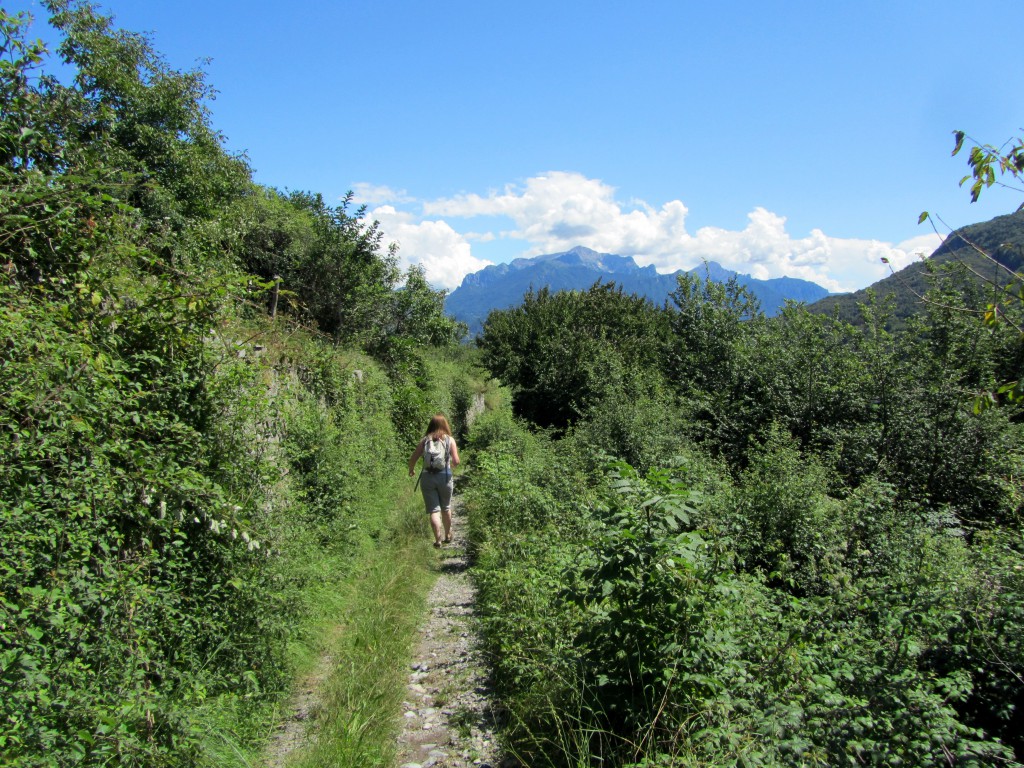
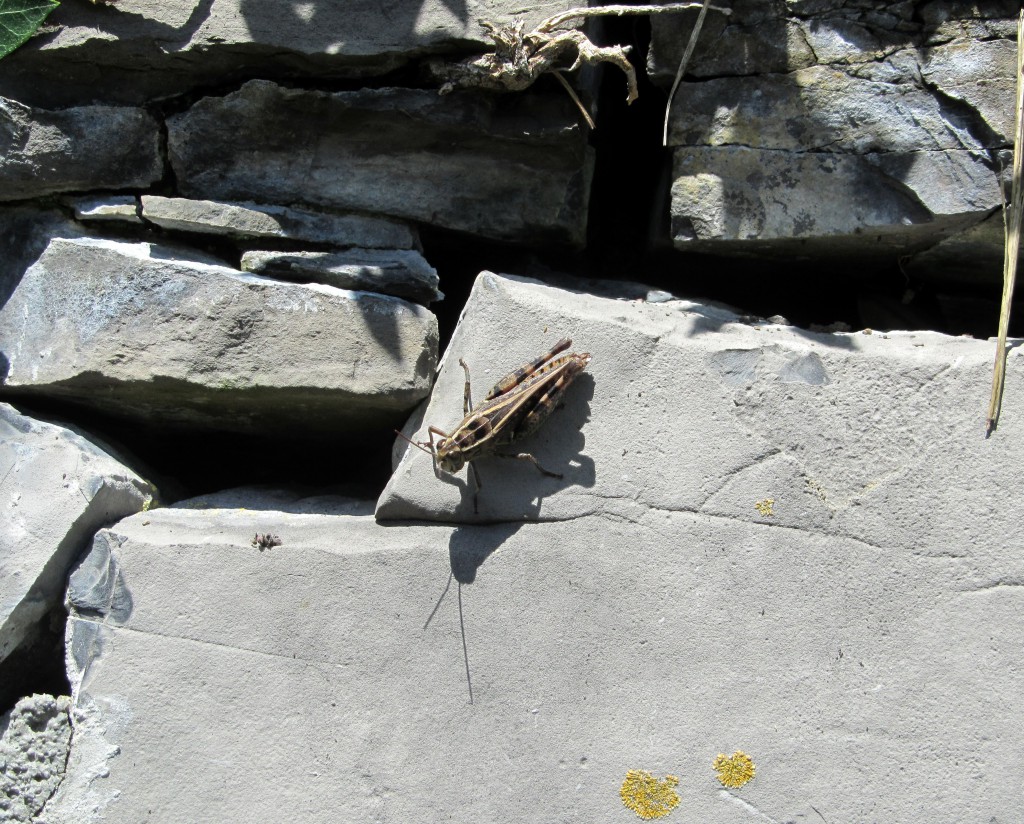
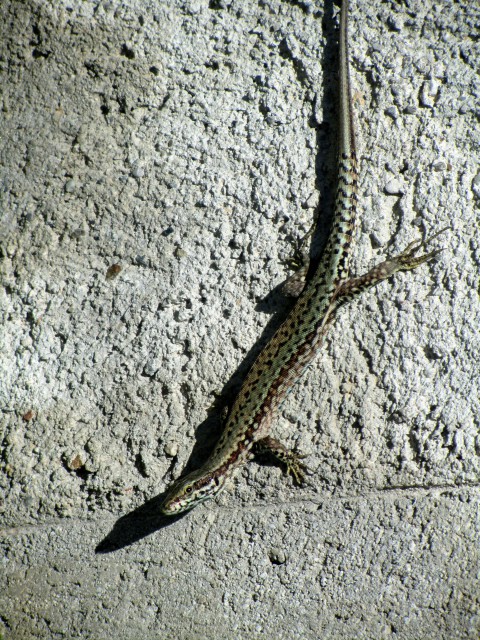
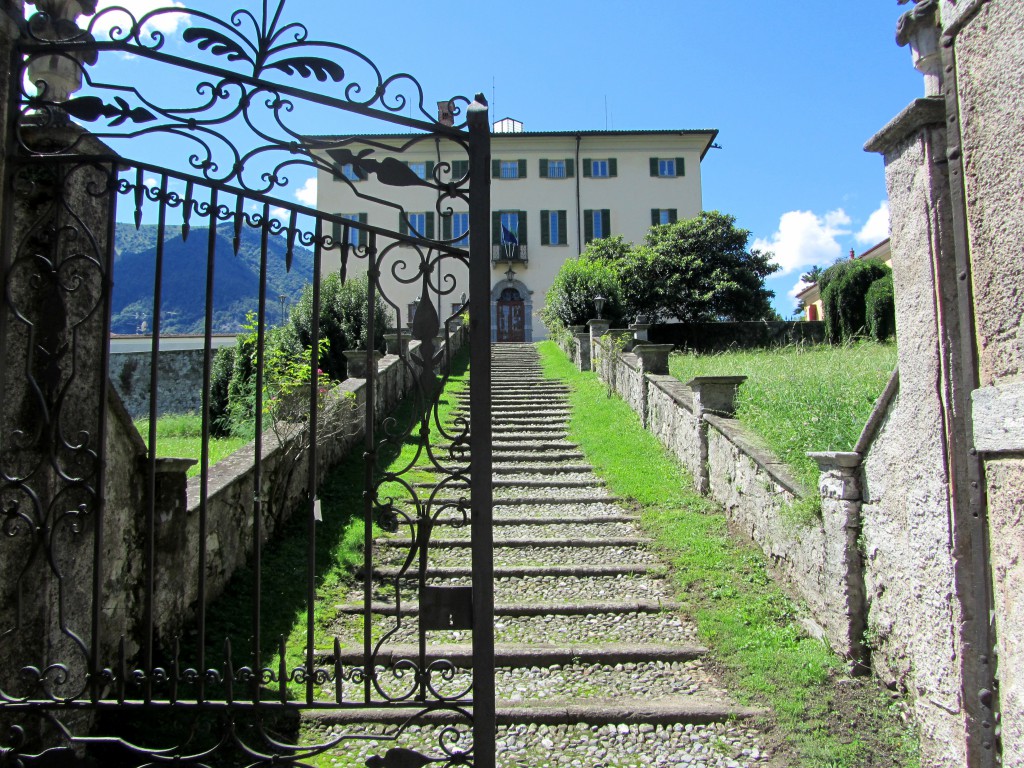

Long ago I read about a boy who lived in the trees, only recently realising it was Calvino’s Baron. Thanks for capturing both solidity & magic of Il Rogolone & delivering it with all the trimmings to brighten a dull Sunday morning. Susie Pocket X
Thanks Susie. I’d wondered about the Baron in the Trees but never read it so today I got myself a copy. Thanks for the recommendation!